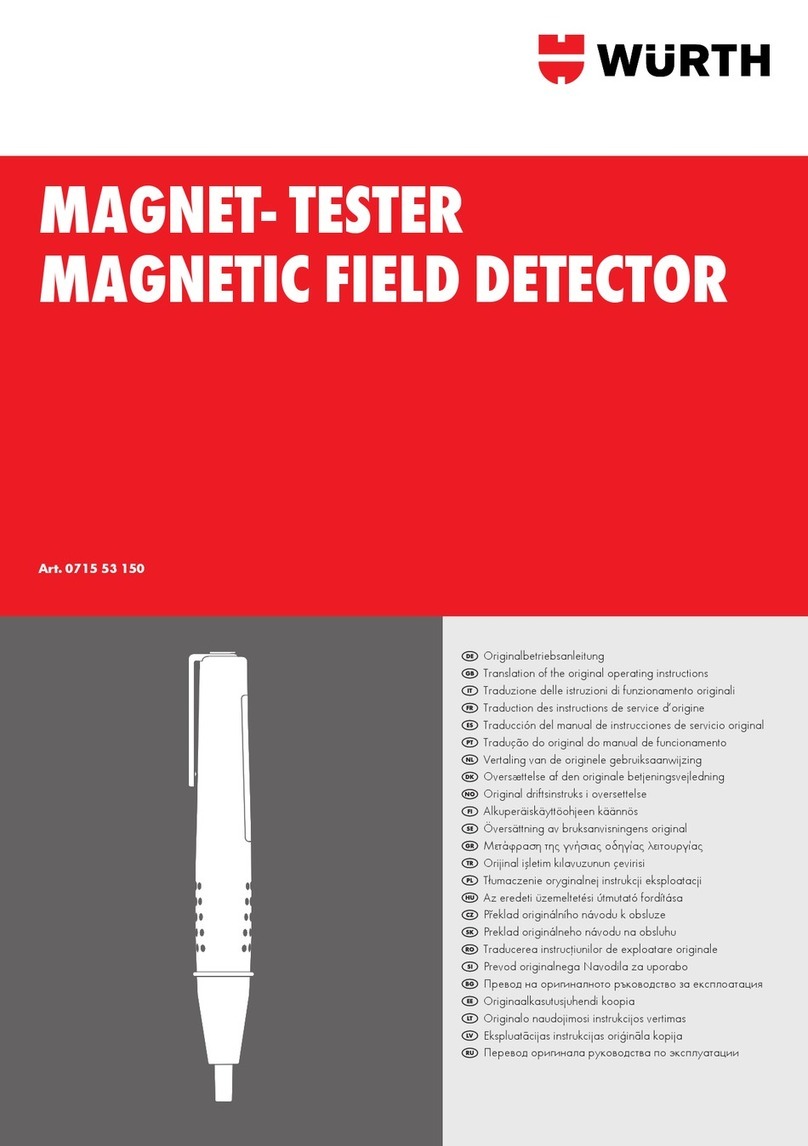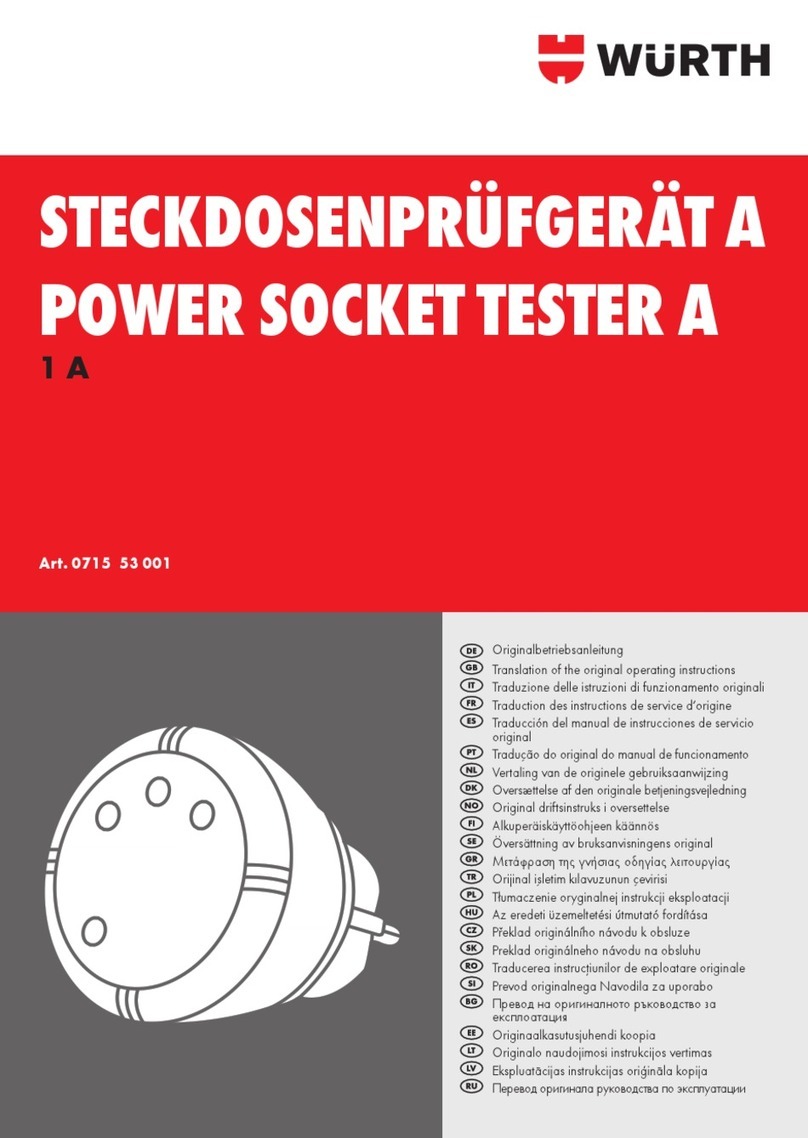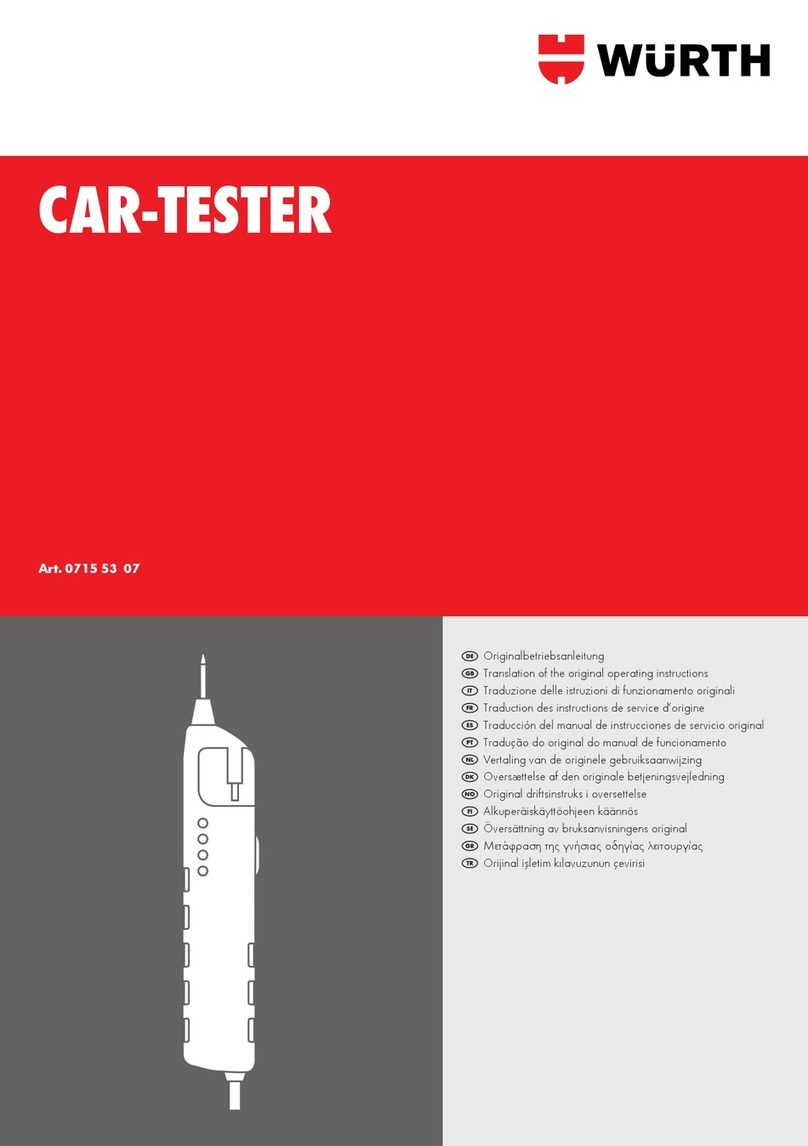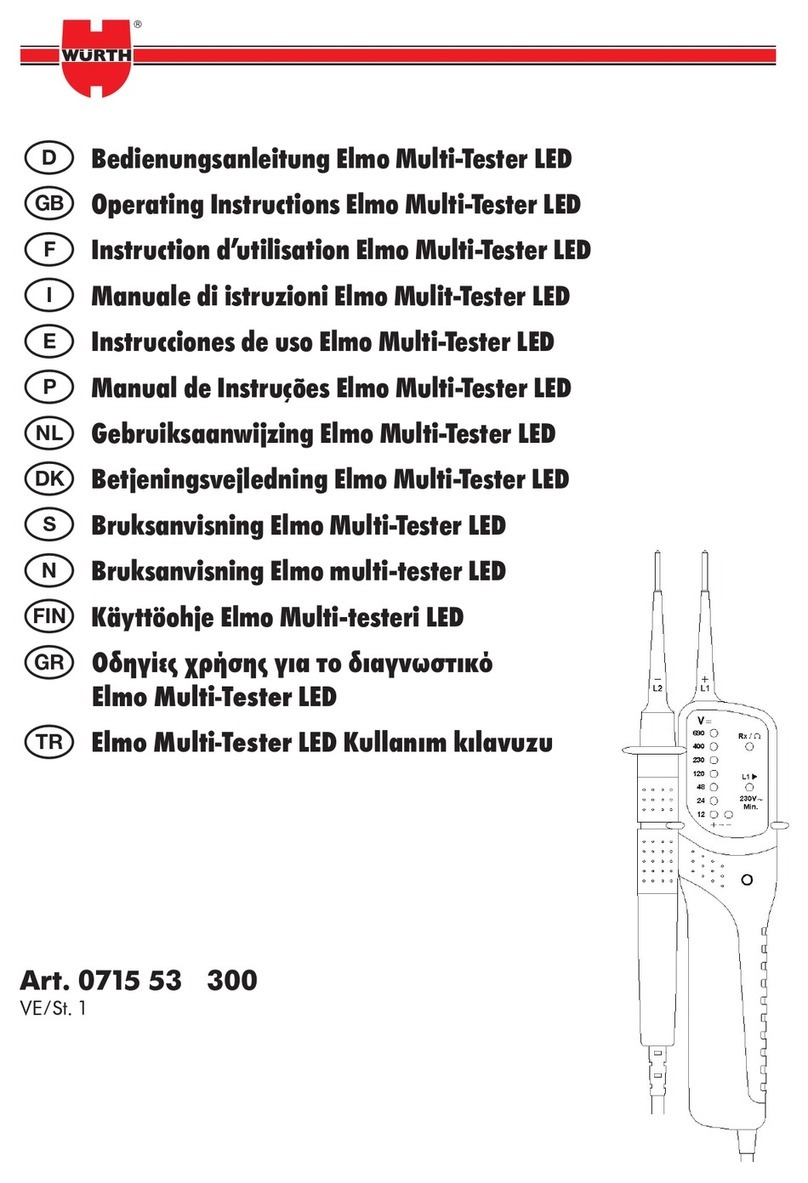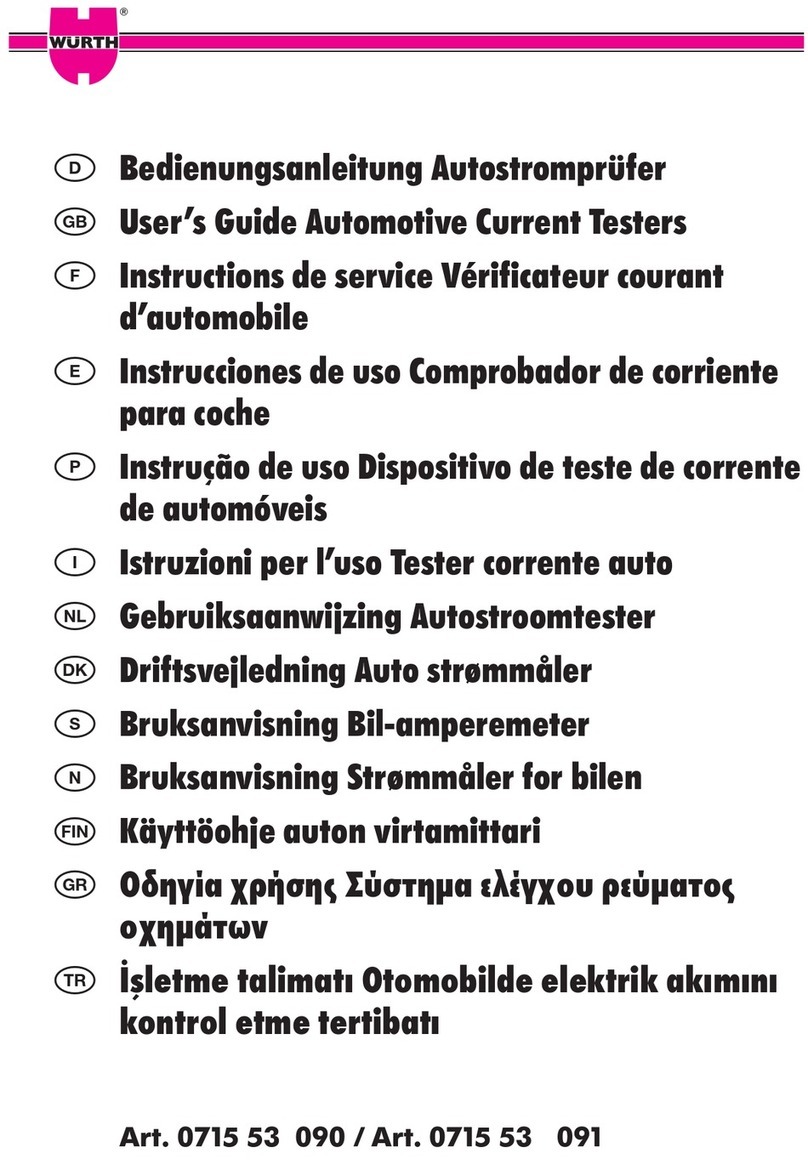
6
Bedienung
Allgemein
Spannungen haben Priorität. Liegt keine Spannung
an den Prüfspitzen an (< 3 V), bendet sich das
Gerät im Modus Durchgangs-/Widerstandsprüfung.
Funktion
Um das Gerät einzuschalten, halten Sie beide
Messspitzen aneinander. Nach kurzer Zeit schaltet
das Gerät automatisch durch die „Auto Power O“-
Funktion ab. Restlaufzeit wird angezeigt.
Das An- bzw. Abschrauben der Messspitzenadapter
macht das Messen an Steckdosen komfortabler.
Selbsttest
Halten Sie zum Test die Prüfspitzen aneinander. Der
Prüfsummer muss deutlich ertönen und die Anzeige
ca. „000“ anzeigen. Sollte das LC-Display nicht
oder nur schwach aueuchten, müssen die Batterien
erneuert werden. Sollte das Gerät mit neuen Batte-
rien nicht funktionieren, muss es vor Fehlbenutzung
geschützt werden.
Gleichspannung prüfen
Bei Anlegen der Prüfspitzen an eine Gleichspan-
nung innerhalb des Nennspannungsbereiches,
wird die Spannung in Volt angezeigt und zusätzlich
erscheint „DC“ im Display. Liegt an der Prüfspitze
„L1“ eine negative Spannung an, wird ein „-“ (Mi-
nus) vor dem Wert angezeigt. Ab einer Spannung
von ca. 35 V wird die lebensgefährliche Spannung
mittels blinkender LED hinter dem Display und einem
akustischen und vibrierenden Signal angezeigt.
Selbst bei entleerten Batterien wird der
Spannungswert angezeigt.
Wechselspannung (TRMS) prüfen
Bei Anlegen der Prüfspitzen an eine Wechselspan-
nung innerhalb des Nennspannungsbereiches,
wird die Spannung in Volt angezeigt und zusätzlich
erscheint "AC" im Display.Ebenfalls wird die Netzfre-
quenz angezeigt. Ab einer Spannung von ca. 35 V
wird die lebensgefährliche Spannung mittels blinken-
der LED hinter dem Display und einem akustischen
Signal angezeigt.
Selbst bei entleerten Batterien wird der
Spannungswert angezeigt
DATA HOLD-Funktion
Durch das kurze Betätigen der „L.H.“-Taste (Daten-
speicher), kann ein Messwert auf dem LC-Display
gespeichert werden. Die „DATA HOLD“-Funktion
wird durch das Symbol „D.H.“ auf dem Display
Feld angezeigt und kann durch nochmaliges kurzes
Betätigen der gleichen Taste wieder ausgeschaltet
werden.
Phasenprüfung
Berühren Sie mit der Testspitze „L1“ einen Leiter.
Bei Anliegen einer Phase von min. 100 V~ ,
erscheint im LC-Display „<L“.
Für die Bestimmung der Phasenleiter kann die Wahr-
nehmbarkeit der Anzeige beeinträchtigt werden, z.B.
durch isolierende Vorrichtungen zum Schutz gegen
direktes Berühren, in ungünstigen Positionen, zum
Beispiel auf Holzleitern oder isolierenden Fußboden-
belägen, einer nicht geerdeten Spannung oder auch
bei ungünstigen Lichtverhältnissen.
Drehfeldprüfung (max. 400 V)
Umfassen Sie vollächig die Grie L 1 und L2.
Legen Sie die Prüfspitzen L 1 und L2 an zwei Außen-
leiter (Phasen) und prüfen Sie ob die Außenleiter-
spannung von z.B. 400 V anliegt.
Eine Rechtsdrehfolge (Phase L 1 vor Phase L2)
ist gegeben, wenn der Buchstabe „R“ im Display
erscheint.
Eine Linksdrehfolge (Phase L2 vor Phase L1) ist gege-
ben, wenn der Buchstabe „L“ im Display erscheint.
Der Drehfeldbestimmung muss immer eine Prüfung
mit vertauschten Prüfspitzen erfolgen. Dabei muss
sich die Drehrichtung ändern.
Die Drehfeldprüfung ist ab 200 V,
50/60 Hz (Phase gegen Phase) im
geerdeten Drehstromnetz möglich.
Einhandprüfung
Durch den an der Messleitung bendlichen Abstand-
halter, ist eine Arretierung der beiden Handteile
möglich.
Durch einfaches Drehen ist der Abstand der Mess-
spitzen einstellbar. ( Schuko/CEE)
Messstellenbeleuchtung
Durch längeres Betätigen der „L.H.“-Taste (Daten-
speicher) wird die Messstellenbeleuchtung ein- bzw.
ausgeschaltet.
